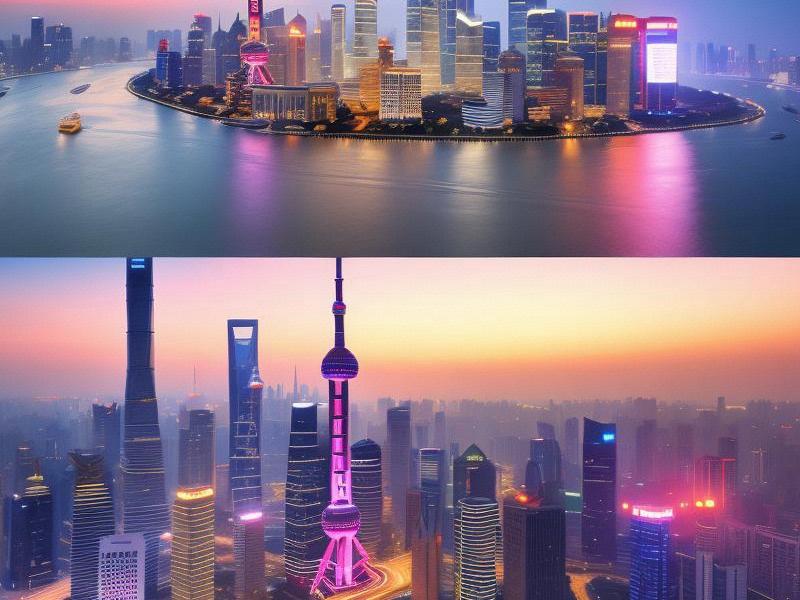This article delves into the vibrant city of Shanghai and its surrounding areas, exploring their unique blend of urban development, cultural heritage, and economic growth. Shanghai, as a global financial hub, not only shines in its skyline but also in the rich tapestry of its history and the dynamic transformations of its neighboring regions.

Shanghai, often referred to as the "Pearl of the Orient," stands as a testament to China's rapid urbanization and economic prowess. As the largest city in China and one of the world's most populous metropolises, Shanghai is a melting pot of cultures, a beacon of modernity, and a gateway to the country's heartland.
The city's skyline is an iconic symbol of its status as a global financial center. The Oriental Pearl Tower, the Jin Mao Tower, and the Shanghai Tower are not just architectural marvels but also represent the city's relentless pursuit of innovation and excellence. These skyscrapers stand tall amidst the bustling streets of Puxi and Pudong, showcasing the harmonious coexistence of tradition and modernity.
Puxi, the western part of Shanghai, is where the city's historical roots lie. The Bund, a waterfront area lined with colonial-era buildings, offers a glimpse into the city's past. Here, the contrast between the old and the new is striking, with the historic architecture standing shoulder to shoulder with the modern skyscrapers of Lujiazui in Pudong across the Huangpu River.
Pudong, on the other hand, is a symbol of Shanghai's transformation into a global financial hub. Once a rural area, Pudong has been transformed into a modern district with state-of-the-art infrastructure, luxury shopping malls, and high-end residential areas. The Lujiazui Financial District is home to some of the world's tallest buildings and is a hub for international finance and business.
爱上海最新论坛 Beyond the city limits, Shanghai's surroundings offer a diverse range of landscapes and experiences. The nearby Yangtze River Delta region is one of the most economically developed areas in China, with cities like Suzhou, Hangzhou, and Nanjing offering a blend of historical sites, natural beauty, and modern attractions.
Suzhou, often referred to as the "Venice of the East," is famous for its classical gardens, canals, and silk production. The Humble Administrator's Garden, one of the most renowned gardens in China, is a masterpiece of Chinese landscape architecture. Visitors can stroll through the meticulously designed landscapes, marveling at the harmony between nature and human creativity.
Hangzhou, the capital of Zhejiang Province, is known for its breathtaking West Lake, a UNESCO World Heritage Site. The lake is surrounded by lush greenery, ancient temples, and charming pavilions, making it a perfect getaway from the hustle and bustle of city life. The city is also a hub for tea culture, with the famous Longjing (Dragon Well) tea being a must-try for visitors.
Nanjing, the capital of Jiangsu Province, is steeped in history and culture. As the former capital of several Chinese dynasties, Nanjing boasts a rich legacy of historical landmarks, including the Sun Yat-sen Mausoleum, the Ming Xiaoling Mausoleum, and the Nanjing Massacre Memorial. The city's vibrant food scene, with its famous salted duck and tangbao (soup dumplings), is another attraction for food lovers.
上海私人品茶
The surrounding areas of Shanghai are not just destinations in their own right but also play a crucial role in the city's economic and cultural development. The integration of these regions into the larger Shanghai metropolitan area has created a dynamic and interconnected urban network.
The development of the Shanghai Free-Trade Zone has further enhanced the city's status as a global trade hub. This initiative has attracted numerous multinational corporations and foreign investors, contributing to the region's economic growth and innovation. The zone's policies on trade facilitation, investment liberalization, and financial reform have set new standards for international trade.
Culturally, the surrounding areas of Shanghai are a treasure trove of traditional Chinese art, music, and cuisine. The city's museums, galleries, and theaters showcase a wide range of artistic expressions, from classical Chinese paintings to contemporary art. The annual Shanghai International Film Festival is a major event that attracts filmmakers and audiences from around the world.
419上海龙凤网 The culinary scene in Shanghai and its surroundings is equally diverse and exciting. From the authentic Shanghainese cuisine, known for its sweet and savory flavors, to the regional specialties of neighboring provinces, there is something to satisfy every palate. The city's night markets and food streets offer a lively and authentic culinary experience, with vendors serving up a variety of street food and local delicacies.
In recent years, Shanghai has also made significant strides in environmental sustainability and green development. The city has implemented various initiatives to reduce pollution, promote renewable energy, and improve public transportation. The construction of the Maglev train, the world's fastest commercial high-speed train, has revolutionized travel within the city and to nearby areas.
The integration of technology and smart city solutions has further enhanced the quality of life in Shanghai. The city's smart grid, intelligent transportation systems, and digital government services have improved efficiency and convenience for residents and visitors alike. Shanghai's commitment to innovation and sustainability has positioned it as a leader in urban development and a model for other cities worldwide.
As Shanghai continues to grow and evolve, its surrounding areas remain an integral part of its story. The harmonious blend of urban development, cultural heritage, and economic growth in Shanghai and its surroundings is a testament to the city's resilience and adaptability. Whether it's exploring the historic landmarks, savoring the culinary delights, or experiencing the vibrant culture, Shanghai and its surroundings offer a rich and rewarding journey for all who visit.
In conclusion, Shanghai and its surroundings are a microcosm of China's rapid transformation and global aspirations. The city's skyline, historical landmarks, cultural treasures, and economic achievements are a reflection of its dynamic spirit and unwavering commitment to progress. As the "Pearl of the Orient," Shanghai continues to shine brightly on the global stage, inspiring and captivating people from all corners of the world.